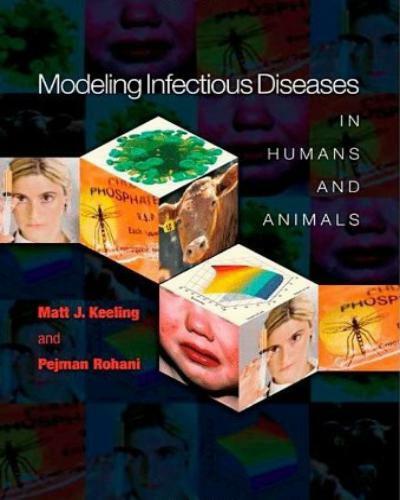Modeling Infectious Diseases in Humans and Animals, For epidemiologists, evolutionary biologists, and health-care professionals, real-time and predictive modeling of infectious disease is of growing importance.
Modeling Infectious Diseases in Humans and Animals

This book is designed as an introduction to the modeling of infectious diseases. We start with the simplest of mathematical models and show how the inclusion of appropriate elements of biological complexity leads to improved understanding of disease dynamics and control.
Throughout, our emphasis is on the development of models, and their use either as predictive tools or as a means of understanding fundamental epidemiological processes. Although many theoretical results can be proved analytically for very simple models, we have generally focused on results obtained by computer simulation, providing analytical results only where they lead to a more generic interpretation of model behavior. Where practical, we have illustrated the general modeling principles with applied examples from the recent literature. We hope this book motivates readers to develop their own models for diseases of interest, expanding on the model frameworks given here.
This book provides a timely and comprehensive introduction to the modeling of infectious diseases in humans and animals, focusing on recent developments as well as more traditional approaches. Matt Keeling and Pejman Rohani move from modeling with simple differential equations to more recent, complex models, where spatial structure, seasonal “forcing,” or stochasticity influence the dynamics, and where computer simulation needs to be used to generate theory. In each of the eight chapters, they deal with a specific modeling approach or set of techniques designed to capture a particular biological factor.
They illustrate the methodology used with examples from recent research literature on human and infectious disease modeling, showing how such techniques can be used in practice. Diseases considered include BSE, foot-and-mouth, HIV, measles, rubella, smallpox, and West Nile virus, among others. Particular attention is given throughout the book to the development of practical models, useful both as predictive tools and as a means to understand fundamental epidemiological processes.
To emphasize this approach, the last chapter is dedicated to modeling and understanding the control of diseases through vaccination, quarantine, or culling.Comprehensive, practical introduction to infectious disease modeling Builds from simple to complex predictive models Models and methodology fully supported by examples drawn from research literature Practical models aid students’ understanding of fundamental epidemiological processes For many of the models presented, the authors provide accompanying programs written in Java, C, Fortran, and MATLAB In-depth treatment of role of modeling in understanding disease control.
Password: pdflibrary.net
